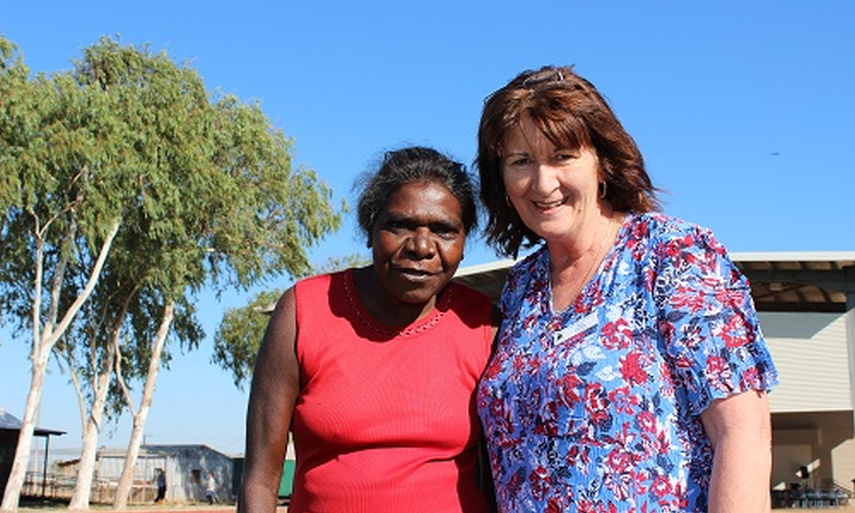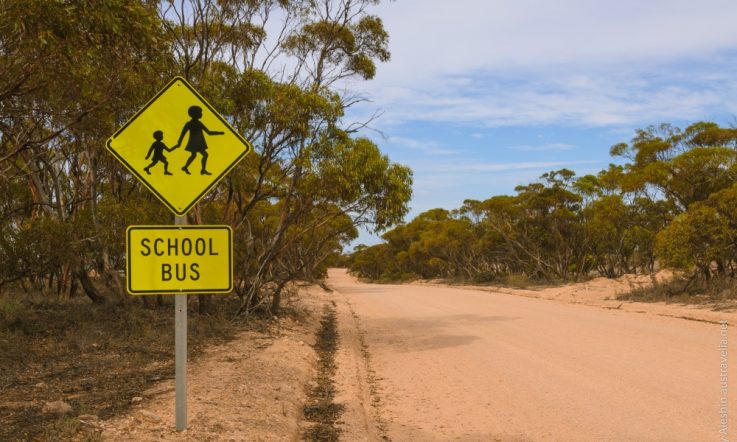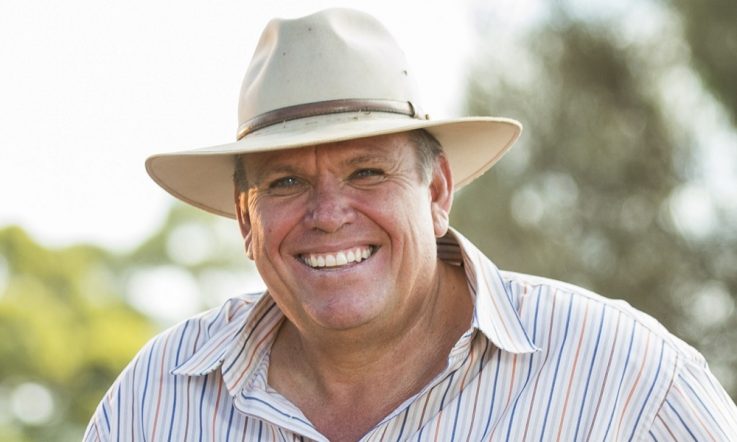Last month we spoke to Dr John Halsey about his independent review into some of the key issues and challenges in regional, rural and remote education. In this follow up, we find out more about a successful school leadership approach highlighted in Dr Halsey's report – the co-principalship model at Gunbalanya School in the Northern Territory. And stay tuned for part two, focusing on how the school is implementing a flexible calendar to improve attendance, and working with the local community and industry on pathways to prepare students for work.
‘The model depends on trust,' Sue Trimble tells Teacher. ‘We can't discuss every decision we make, so you have to trust that we're on the same pathway.'
For the last seven years, Trimble has been one half of the co-principalship team at Gunbalanya School in West Arnhem Land, alongside permanent Principal Esther Djayhgurrnga. The pair had a very good relationship prior to the model being introduced, and Trimble says it is simple, shared pathways that have been key to its success.
‘… if you think of an Indigenous lady that's a local woman, and I'm not, I'm a Westerner and I come with a strong curriculum background and Esther has the strong local connection, community connection. So if you look at that, straight away you'll see the easy pathway that's going to lead to.
‘Esther has a strong understanding of family, all the kinship relationships, and I've got the teacher-type instant direction into the curriculum, classroom practice. So very much the split started that way. We both have the same strong belief in high expectations and we have a saying “the standard you walk by is the standard that you accept”. So that's just melded easily.'
The remote, independent public school serves the 1500-strong Gunbalanya community, 320 kilometres east of Darwin, on the border of Kakadu National Park. The majority of its 300 P-12 students are English as a Second Language learners.
Trimble says the model of joint leadership by an Aboriginal and non-Aboriginal Principal has attracted lots of interest from schools and educators. ‘Some say to me “can you give me your roles and responsibilities?” and I say, “yes, I can do that but you have to understand that it's a true essence of a partnership where you do have that trust where you can make ongoing decisions”.
‘If a teacher came to Esther asking about curriculum, she'd say “Oh, go and see Sue, that's a Sue question”. Or, likewise, if they come saying “Can I go take my class on excursion?” (to a certain space), I'd say “Hang on, you better check with Esther or your team teacher ...” So, it's that understanding of the way of the world. Plus, Esther has the language, I don't and that's huge to have that cultural knowledge.'
Crucially, this collaborative way of working extends much further than the role of principal. The school's business plan – created following consultation with the school board and local community – shares the Gunbalanya School vision to ‘work together to create two-way pathways'.
There are two teachers in every classroom, where teachers from a Western background work alongside Indigenous assistant teachers in a team teaching model. ‘So they become the connector between the student, the teacher and the family,' Trimble explains. ‘Just like Esther and I are the connector to the wider connector, to the community businesses. So, constantly that's the triangular approach, you've got that connection and we call it the two-way – the Western way and a local way.' In the school's Arrmunbu Child and Family Centre the centre manager works alongside an Indigenous coordinator, and in the Families as First Teachers early learning program a senior teacher and Indigenous liaison officer work side-by-side. ‘It's very much a model that's throughout the school. Everywhere we go, we mirror that image.'
Prior taking up the contract role at Gunbalanya, Trimble was working with rural and remote schools building capacity in literacy and numeracy, and supporting Indigenous principals. She says the two-way approach is invaluable in a remote Indigenous location because of its strong connection with community. ‘I think the benefit is definitely Esther having the passage of connection to the community. She knows exactly who to go to and when to go to [them] because there are certain times and approaches that you need to take. So she knows the correct protocols, if you like, of doing business in the community.
‘To have that person guiding you in your journey, or decision making you have, is really important. We have a school board that's very strong in its decision making. They've got very clear directions now for us to follow and that makes our pathway easy.'
She adds, whatever the model, a remote principal needs some cultural support. At Gunbalanya that also means two principals, but in another context it may mean having an advisor or mentor. ‘If you don't have that … you wouldn't be getting into that deep understanding with your families about what the real aim of the school is and the learning that's happening.'
Stay tuned: In part two, we'll be finding out how the school is implementing a flexible calendar to improve attendance, and working with the local community and industry on different pathways to prepare students for work.
Discuss: Think about your own context. What would you say to a prospective parent who asked you to explain the vision and aims of your school?



